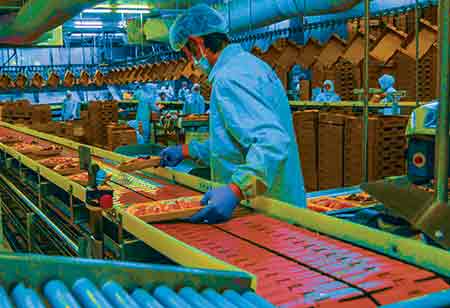Thank you for Subscribing to Food Business Review Weekly Brief
- Home
- Topics
- Alternative Proteins and Plant Based Food
- Beer and Wine
- Canned Beverages
- Coffee And Tea
- Food and Beverage Consulting
- Food and Beverage Financial Service
- Food And Beverages Marketing
- Food Distributors
- Food Ingredients
- Food Sustainability
- Plant Based Food and Beverages
- Seafood Suppliers
- Supplement Manufacturing
- Wine Investment
- News
- Vendor Viewpoint
- CXO Insights
- Conferences
- Newsletter
- CXO Awards
-
Processing Of Healthier Snacks Gains From Technology Implications
Led by demand for convenience, ingredients, and patience, the lines between meals and snacks have become progressively obscured.

By
Food Business Review | Friday, February 04, 2022
Stay ahead of the industry with exclusive feature stories on the top companies, expert insights and the latest news delivered straight to your inbox. Subscribe today.

The key is knowing the present capabilities and studying what technology is available to help evolve products to fit specific categories and trends. In addition, technology is continually changing, allowing manufacturers with more solutions than ever before.
Led by demand for convenience, ingredients, and patience, the lines between meals and snacks have become progressively obscured. As the snack market sheds its association with guilty consumption by introducing healthier ingredients and more sustainable processing and packaging, it needs to evaluate the technology required to create the next generation of products that deliver nutritious and authentic snackable moments.
Snacking is gaining popularity as a suitable way to satisfy hunger and consume nutrient-rich food supporting mental and physical wellbeing. Traditionally, compared with salty, high-fat foods, savory snack manufacturers are looking for ways to keep delivering the indulgence factor while providing healthier options without post-consumption guilt.
Technological Implications of healthier snacks
Regulating the nutritional profiles of savory snacks and adopting innovative processing ways can make a real difference. With substitute ingredients such as sweeteners and healthier oil varieties, ensuring equipment can manage such elements is a significant consideration.
New ingredients and processes adapted to make snacks healthier significantly impact the use of frying technology. Frying methods have emerged to improve the health credentials of canned snack foods. Vacuum or batch frying, for example, can potentially convert the snack industry by creating healthier snacks with lower levels of fat and acrylamide. It potentially happens when starchy foods are cooked at high temperatures for a long time.
In Vacuum frying, the frying vessel is closed, and pressure is minimized, meaning that the boiling point of water is decreased to below 100 degrees Celsius. As a result, the product is cooked continuously at a low temperature to reduce acrylamide formation.
In addition, the low temperature means the degeneration of the product's surface structure is minimized, lowering the amount of oil absorbed – eventually reducing the fat content with a reduced impact on the product quality. When batch frying, the product is done for a more prolonged time at lower temperatures, minimizing acrylamide formation and the oil absorption, thereby creating a healthier end product.






